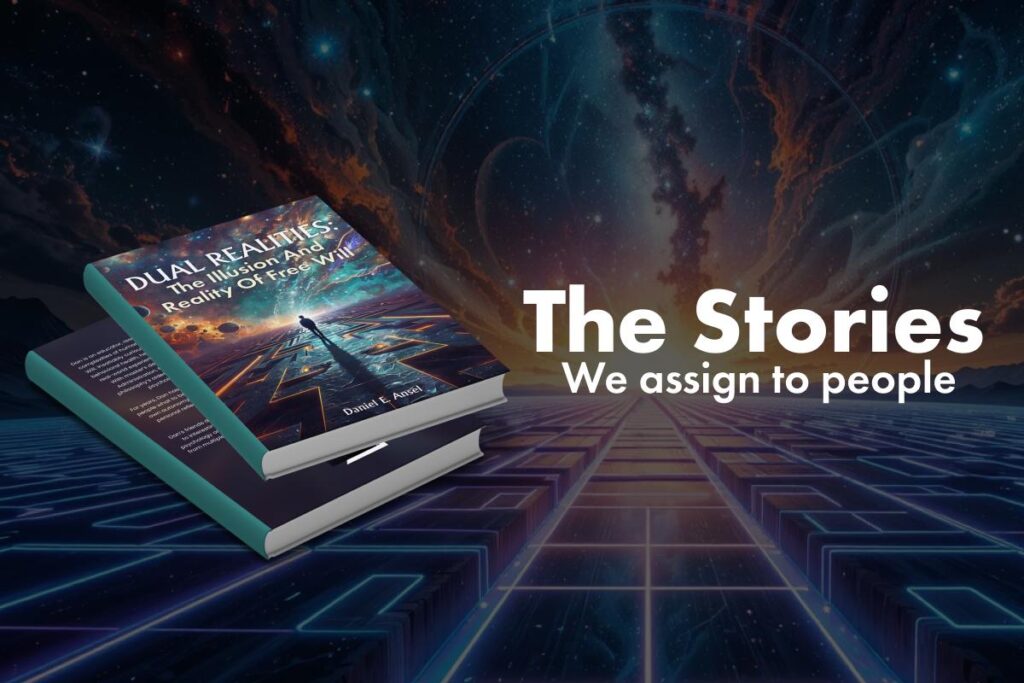Photo courtesy of Pixabay on Pexels.
Opinions expressed by Digital Journal contributors are their own.
How Daniel E. Ansel’s “Dual Realities” reframes the idea of choice
People often create quiet narratives, building explanations around why someone hurt them, withdrew, stayed distant, or repeated mistakes. These stories seldom rely on objective evidence, emerging instead from emotional logic. She was cold. He never cared. They knew what they were doing. These statements close gaps, give events moral shape, and place people into roles: the selfish one, the liar, the coward.
Internal storytelling offers more than psychological relief. It acts as a moral compass, helping individuals assign blame, protect boundaries, and interpret pain. The idea that people are always choosing who they become and how they act is often hidden beneath it. That belief helps you deal with relationships. If someone acts mean, they must be mean. People who stay stuck are often stuck because they are unwilling to grow.
But what if that idea doesn’t work? What if people don’t always make choices on purpose?
These questions are central to Dual Realities: The Illusion and Reality of Free Will, by clinical social worker Daniel E. Ansel. Although grounded in neuroscience and moral philosophy, the book also examines personal assumptions about who deserves grace or blame and how these assumptions sometimes require adjustment.
A spectrum instead of a switch
Ansel doesn’t argue about free will; he rethinks the whole thing. His model sees agency as a range. One end is reactive behavior, which means making choices based on fear, trauma, and old habits. The other is reflective action, which means that understanding can lead to change. Ansel says that most behavior falls somewhere in between these two points.
The implication is big. This model doesn’t eliminate accountability; it simply changes the way it operates. The question shifts from whether someone meant to hurt to what made them capable of acting differently in the first place.
This framework, built on years of work in social services and mental health, helps us understand behavior that may seem irrational, self-destructive, or cruel. Someone who ghosts someone else might not be indifferent; they might be afraid of letting them down. If your partner won’t open up, it doesn’t mean they don’t care; they might just not have learned how to show their feelings. The book isn’t about forgiveness; it’s about broadening your perspective. It prompts people to consider the notion that some actions aren’t truly choices.
Complexity without excuses
A key aspect of Dual Realities is its refusal to be harsh or sentimental. Empathy isn’t a cure-all. The book makes clear that understanding why harm happened doesn’t erase it. What changes is the internal posture, the tone of the story.
Someone can stay away without feeling bad about it. The boundary stays, but the story changes from “they didn’t care” to “they couldn’t show up differently.” Not to make excuses, but to clarify.
Ansel examines the cost of binary thinking. When people judge behavior as good or bad, they lose sight of the truth. People turn into characters, and being rigid doesn’t leave much room for compassion, even for oneself.
The role of insight
Central to the book’s framework is the concept of insight. Without it, Ansel argues, behavior tends to repeat. People stay locked in old cycles, not because they choose to, but because they lack the internal distance to see other options. When insight becomes available, even slightly, the possibility for change emerges. It isn’t guaranteed. But it becomes real.
This is not a sudden breakthrough. It might be someone stopping mid-sentence, replying more slowly, or questioning a long-held story about someone. Insight, in this model, isn’t dramatic. It’s subtle and begins with quiet self-questioning.
What if that parent was cold because no one ever taught them how to be close? What if that friend withdrew not to hurt but to survive their own fear of connection? What if the story that made the most emotional sense is missing pieces?
These questions don’t lead to immediate change. But they shift something fundamental: the architecture of judgment.
Boundaries with clarity
One of the book’s clearest strengths lies in its ability to separate empathy from reconciliation. You don’t have to get back into unhealthy patterns to understand someone’s limits. It doesn’t mean changing the rules or ignoring the effects. However, it allows people to set those limits out of clarity, not anger.
The difference between punishment and peace is small but profound. Ansel’s work suggests that most decisions in strained relationships hinge not only on what happened but on how that event was narrated afterward. Was it interpreted through anger, or through understanding? Was it processed through fear, or through truth?
What Dual Realities offers is permission. Permission to feel hurt. Permission to hold people accountable. But also permission to consider that not every wound was inflicted with full awareness or control.
Facing the self
While much of the book focuses on how people interpret others, it also turns inward to explore the inner workings of the mind. Many people live with guilt over past actions, such as shutting down in a relationship, lashing out during stress, or staying silent when they should have spoken. Ansel offers a lens for making sense of these moments without succumbing to shame.
His point is not that these choices were harmless. It’s that they often reflected an undeveloped capacity. The tools weren’t there yet. And though harm may have been caused, there is a difference between reflection and self-punishment.
This is where the book extends its greatest grace. It does not promise healing. It does not suggest that every relationship can be salvaged or that every behavior can be excused. But it does suggest that people are not static. And that context matters. Deeply.
A different kind of storytelling
Ultimately, Dual Realities is not about fixing relationships. It’s about revising the lens through which they are remembered and understood. The question it poses is not “who was wrong” but “what stories were told, and who do they serve.”
Most people live within a patchwork of internal narratives. Some are protective. Some are accusatory. Some are worn thin by time. Ansel doesn’t ask readers to discard these entirely. He asks them to pause, hold their certainty more gently, and consider alternatives.
Growth, as presented here, is not loud. It does not always lead to transformation. But it begins in the quiet shift of narration. In the moment where a new story is possible. One that holds pain, yes, but also room for motion, and for meaning.
Content shared from www.digitaljournal.com.

